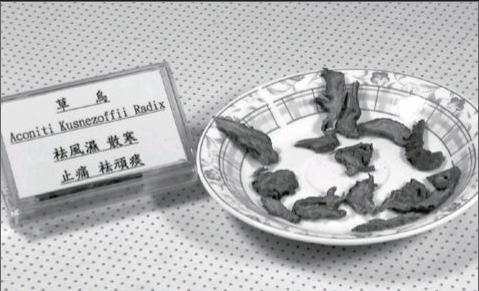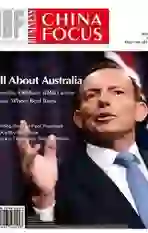The“Poisoned”Brand
2014-09-22

With or without poison? For Yunnan Baiyao, this is a hard question to answer. In April, this well-established Chinese traditional brand known for its products to cure physic injury officially admitted that there was radix aconite agrestis in its recipe. Prior to that, this 111-year old brand was protected by the national rules considers its recipe to be confidential, which was the best ruse for Yunnan Baiyao to conceal its recipe from the public in China.
By contrast, in 2002, when Yunnan Baiyao submitted the applications to U.S. Food and Drug Administration, it revealed its recipe, including radix notoginseng, borneol, ajuga nipponensis makino, sheepera inula herb, rhizoma dioscoreae nipponiace, Chinese yam, alpinia officinarum hance and geranium widfordii. Still the radix aconite agrestis cannot be found in the recipe.
In October 2013, Yunnan Baiyao updated its instruction note in China, but the recipe still remained a secret. Only one sentence was added: “this product contains components from radix aconite agrestis. The other components are not to be disclosed.”
The Published Recipe with Poison
“The adix aconite agrestis used in Yunnan Baiyao is a kind of aconitum. Through unique processing, production procedures, the toxic staff inside it can be completely removed. Therefore, the product is very safe,” said Wu Wei, board secretary of Yunnan Baiyao.
On April 8, the company published a notice, claiming that the modified instruction notes for Yunnan Baiyao products are a result as required by the China Food and Drug Administration (CFDA), which has universal rules for all pharmaceutical companies having business in China. The safety and validity of the companys products have gone through the long-term tests and prove to be true.
“The state rules have included 28 kinds of Chinese herbs with toxic parts. Only one of them is used by Yunnan Baiyao,” Wu Wei said.
In November 2013, the CFDA published a notice, requiring all the enterprises producing TCM decoction pieces with toxic staff must add warnings about the poison in their instructions. As required, the 28 kinds of toxic materials, including arsenic, quicksilver, radix aconite, and realgar, need to be particularly indicated. When these requirements were published, Yunnan Baiyao was immediately placed under the spotlight because it is one of the most famous TCM brands in China.
But the questions over Yunnan Baiyao were not ended at that time? This event did not either represent the peak of doubts over this company.endprint
The available data shows that radix aconite agrestis has a common nam: “intestine-breaking herb”. The alkaloid inside it is harmful for kidneys and the excess amount will cause numbness of lips and limbs, as well as the effects of nausea and emesis. It could even be life-threatening in serious cases.
On February 5, 2013, the Department of Health of Hong Kong found the alkaloid that was not identified in five of its products. The Department of Health of Hong Kong, as well as its counterpart in Macau, immediately issued a document calling for the stop of using these five products.
Following that incident, the CFDA held a meeting with the executives of Yunnan Baiyao, requiring them to modify the instructions to their products and have the warnings about the product safety added.
Earlier than that, it was reported that a patient in Guangdong died of being poisoned by Yunnan Baiyao.
In truth, Chinas State Council issued the Management of Toxic Reagents for Medical Purpose in 1998, clarifying the 28 kinds of toxic TCM products that must be underlined.
“According to the new version of 2013, even the Chinese traditional medicine with patents cannot make an exception. This places a chain around Yunnan Baiyao,” said a reliable source close to the CFDA.
He also said: “Previously, Yunnan Baiyao was protected by the confidential rules and was barely touched by these files. However, in these two years, there were more and more doubts about its toxicity and safety. The stress on the company, as well as the watchdog, suddenly increased a lot.”
However, as said before, the new version of Yunnan Baiyaos instructions still remains its mystery. They have only the radix aconite agrestis revealed with the other parts still being confidential. An insider of Yunnan Baiyao explained that different countries have different requirements over the information disclosure, and Yunnan Baiyaos recipe is considered to be confidential in China, thus the non-disclosure of the recipe in China does not violate the Chinese laws.
However, it still publishes its recipe, or at least part of it, in the United States. Such a “discriminative” way raised the doubts and rages in China. Some people even filed a lawsuit against Yunnan Baiyao for this matter.
Yunnan Baiyao is not the only Chinese medicine that contains toxic staff. According to a professional website of TCM, there are 13 kinds of TCM products with radix aconite kusenzoffii, 11 products with radix aconite agrestis, one product with monkshood, one product with white monkshood, 19 products with pinellia ternata and 25 products with venenum bufonis. These products come from Tongrentang, Hutchison Medi Pharma and so on.endprint
The Toxic Materials in TCM
“The toxic drug is always an important part of the Chinese medical components. The toxic drug does not mean that the drug is harmful. This is basic theory in the TCM,” said Prof. Gao Xuemin from Beijing University of Traditional Chinese Medicine.
“Have a look at the materials used by Chinese pharmacists, quicksilver, raw pinellia ternata, venenum bufonis and so on, are highly toxic, but the Chinese medicine theory focused on the compatibility of medicines. In addition, these materials need to be processed based on strict orders to lower the toxicity and bring the medical properties into full use. This is what Chinese pharmacists and herbalists did in the past 5000 years and the features of TCM,” said Prof. Gao Xuemin.
Whats fretting over her is that todays society lacks the correct understanding of TCM and the stagnant development of TCM materials might reduce the quality and usage of toxic materials, which is not good news for the long-term development of TCM.
In 2010, the CFDA launched a one-year research into development situation of toxic materials for TCM, hoping to draw a map of this industry and to work out a reasonable management system for those toxic materials through approval numbers.
“The great reduction in the use of toxic materials is stripping the TCM industry of normal development,” said Li Lei, executive vice president of the TCM Decoction Piece Branch of China Chamber of Commerce of Import & Export of Medicines & Health Products.
In the investigation mentioned above, Li Lei immediately found that it was very costly to reserve the toxic materials for TCM – the high toxicity of some materials force the administrative departments to apply strict control over each step.
For example, the price for arsenic is 2.6 yuan per kilogram. Monitoring devices, special safe and professionals are needed for the storage of this material. The public security department checks over the storage points once every year. In comparison, the arsenic is barely used in the treatment. Sometimes it might not be used for years. Therefore, many enterprises choose to destroy the arsenic and give up the storage.
Meanwhile, the facts that the leftovers of TCM materi- als pollute the land and water also bring the problem of toxic materials of TCM to the frontline.
In 2013, an international organization of environmental protection published a report, stating that 70% of several kinds of common materials for TCM from Tongrentang, Yunnan Baiyao and other seven famous brands were found to have remaining pesticide.
The examination by the third-party department shows that 48 of the 65 samples collected from these companies were found to contain the pesticide residue. Six of them, including phorate, carbofuran, fipronil, aldicarb and ethoprophos, are forbidden to be used on TCM materials. All of them but fipronil have been forbidden to be produced, sold and used for over 10 years.
According to the public data, the TCM market worldwide has the sales amount of about US$30 billion at present, but 70% of them are taken by Korean and Japanese enterprises while Chinese companies only take 5% of the market.endprint
